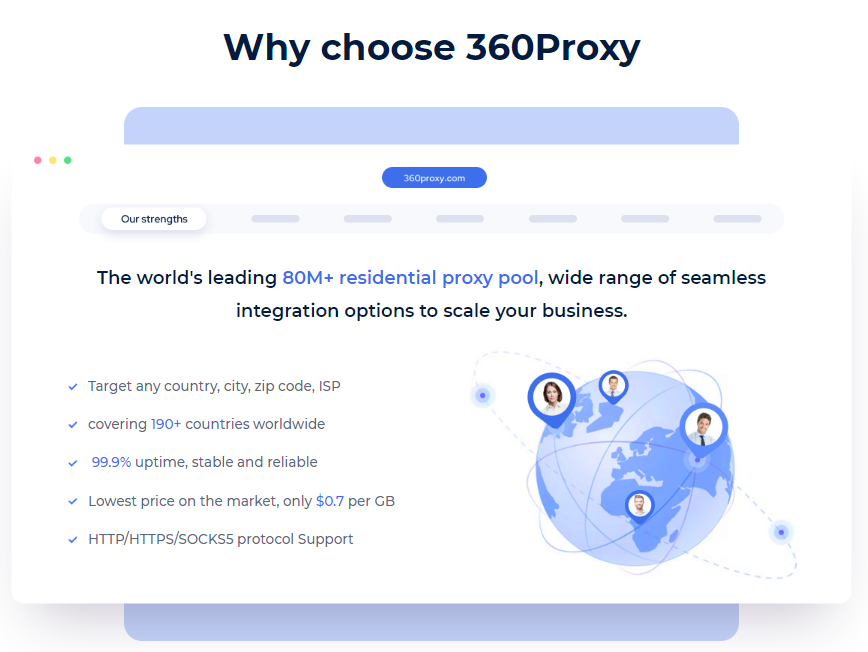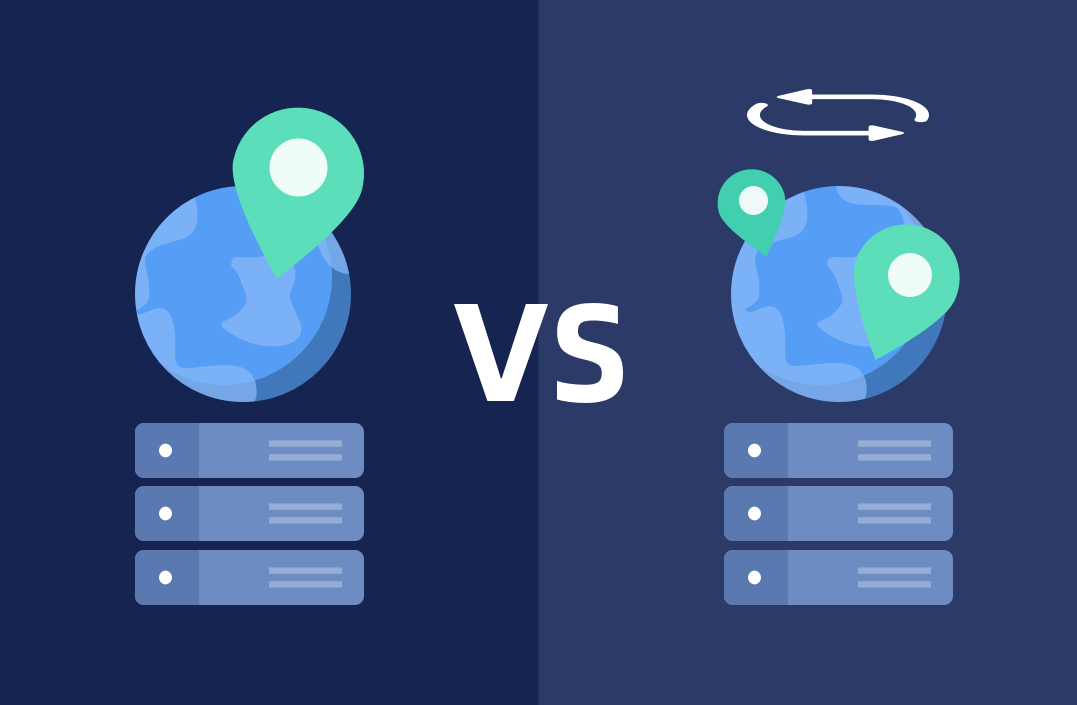Introduction
In the network field, proxy is a common technical means used to improve the performance, security or access control of the system. Static proxy and rotating proxy are two common proxy modes, each with specific advantages and applicable scenarios. This article will deeply explore the concepts, characteristics, and comparisons of static proxies and rotating proxies, while analyzing their different scenarios, advantages and disadvantages in practical applications, to help readers better understand their differences and application scenarios.
The concept of static proxy
Static proxy is a proxy mode in which the proxy relationship is determined during compilation. In a static proxy, the proxy class and the proxy class need to be determined before compilation. The proxy class completes the proxy for the proxy class by implementing the same interface as the proxy class or inheriting the same parent class.
The main features of static proxies include:
Determined at compile time
The proxy relationship is determined at compile time, so the proxy object cannot be changed dynamically at runtime.
Simple and intuitive
Static proxies are relatively simple, easy to understand and implement, and are suitable for simple proxy scenarios.
higher performance
Since the proxy relationship is determined at compile time, the performance of static proxies is relatively high, and there is no dynamic computing overhead at runtime.
readability
Static proxies are relatively intuitive in design, and the relationship between the proxy class and the proxied class can be clearly seen. This makes the code easier to read and maintain.
safety
Static proxies determine the proxy relationship during compilation, so it is easier to ensure security to a certain extent and reduce potential risks caused by dynamic changes at runtime.
Classic application scenarios of static proxies include transaction management, permission control, logging, etc. For example, in transaction management, static proxies can be used to perform additional processing on database operations such as transaction start, commit, or rollback.
The concept of rotating proxies
Rotating proxy (also known as dynamic proxy) is a proxy pattern that creates proxy objects dynamically at runtime. In a rotating proxy, the proxy class creates a proxy object through mechanisms such as reflection at runtime, without knowing the specific information of the proxy class in advance.
Key features of a re-proxy include:
Determined at runtime
The proxy relationship is determined dynamically at runtime, and the proxy object can be flexibly changed as needed.
code reuse
Since the proxy class can proxy multiple proxy classes, rotating proxy has better code reusability.
flexibility
Rotating proxy is suitable for scenarios where you need to dynamically switch proxy objects or proxy multiple objects, and has higher flexibility.
Scalability
The structure of the rotating proxy is more flexible and has better scalability. New proxied classes can be dynamically added to the proxy at runtime.
decoupling
The rotating proxy dynamically generates proxy objects through mechanisms such as reflection, which decouples the proxy class from the specific proxy class. This facilitates a loosely coupled design of the system.
Typical application scenarios of rotating proxies include AOP (aspect-oriented programming), RPC (remote procedure call) frameworks, caching proxies, etc. For example, in AOP, you can use the rotating proxy to achieve unified processing of cross-cutting concerns such as logging and performance monitoring.
Comparison of Static Proxies and Rotating Proxies
flexibility
Static proxies determine the proxy object at compile time and lack flexibility. In contrast, rotating proxy determines the proxy object at runtime, which is more flexible and can dynamically switch proxy objects as needed. This makes rotating proxies more suitable for application scenarios that require dynamic performance.
code reuse
Rotating proxies can better achieve code reuse because they dynamically create proxy objects at runtime. Static proxy requires creating a proxy class for each proxy class, which results in high code redundancy. Rotating proxies are superior in situations where multiple classes or objects need to be proxied.
performance
Static proxies determine the proxy relationship at compile time and have relatively high performance. The rotating proxy dynamically creates proxy objects at runtime, which may introduce certain performance overhead. In scenarios with higher performance requirements, static proxies may be more appropriate.
Maintainability
Since static proxies determine the proxy relationship at compile time, maintenance is relatively simple. The rotating proxy may require more maintenance work due to the dynamic creation of proxy objects at runtime. In cases where project maintainability requirements are high, static proxies may be more convenient.
Scalability
Rotating proxies are more scalable, and new proxied classes can dynamically join the proxy at runtime. This makes the system more susceptible to change and expansion.
decoupling
The rotating proxy dynamically generates proxy objects through mechanisms such as reflection, which decouples the proxy class from the specific proxy class. This contributes to the loosely coupled design of the system and improves the maintainability and scalability of the system.
In conclusion
Static proxies and rotating proxies each have their own advantages and disadvantages. Which proxy mode to choose depends on the specific application scenario. Static proxies are a good choice when performance requirements are high and proxy relationships are relatively fixed; when flexibility and dynamic switching of proxy objects are required, rotating proxies are more suitable. In practical applications, the most appropriate proxy mode can be selected based on comprehensive considerations based on specific needs to achieve better system design and performance optimization.
360Proxy provides 100% real residential proxy resources, covering 190+ countries and regions, and 80M+ residential IP resources. To meet the different needs of users, such as media account management, ESTY, SEO, etc., 360Proxy is a good partner that can help you with your business needs!

 Username: Password
Username: Password
 Whitelist IP
Whitelist IP
 Proxy Manager
Proxy Manager
 Google Chrome Extension
Google Chrome Extension





























 Dashboard
Dashboard Sign Out
Sign Out






























 USA
USA France
France Brazil
Brazil Vietnam
Vietnam Spain
Spain









